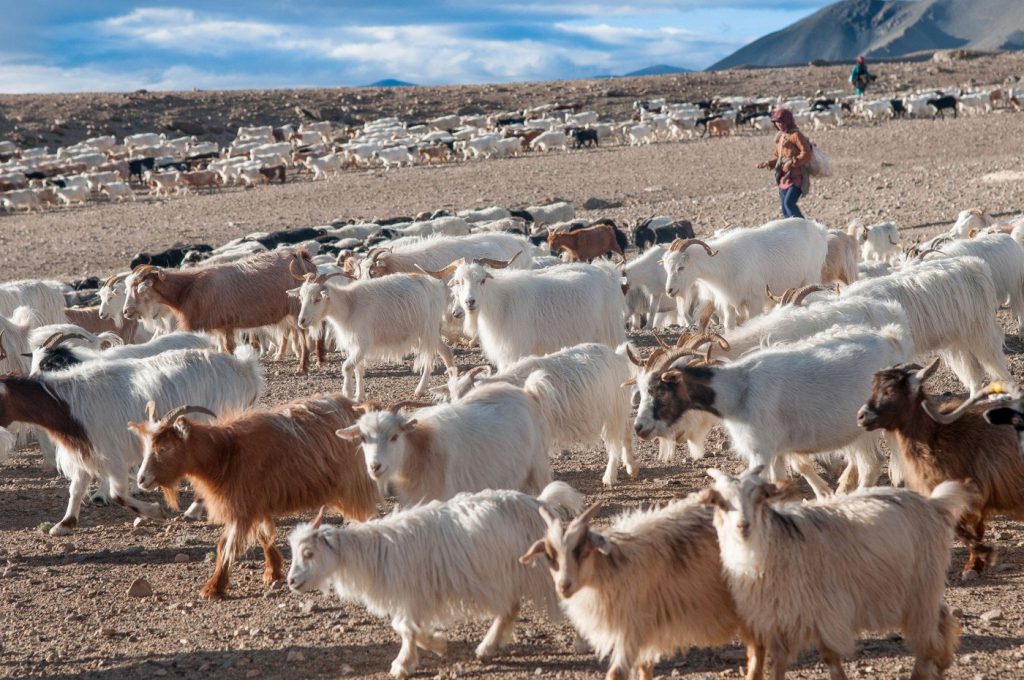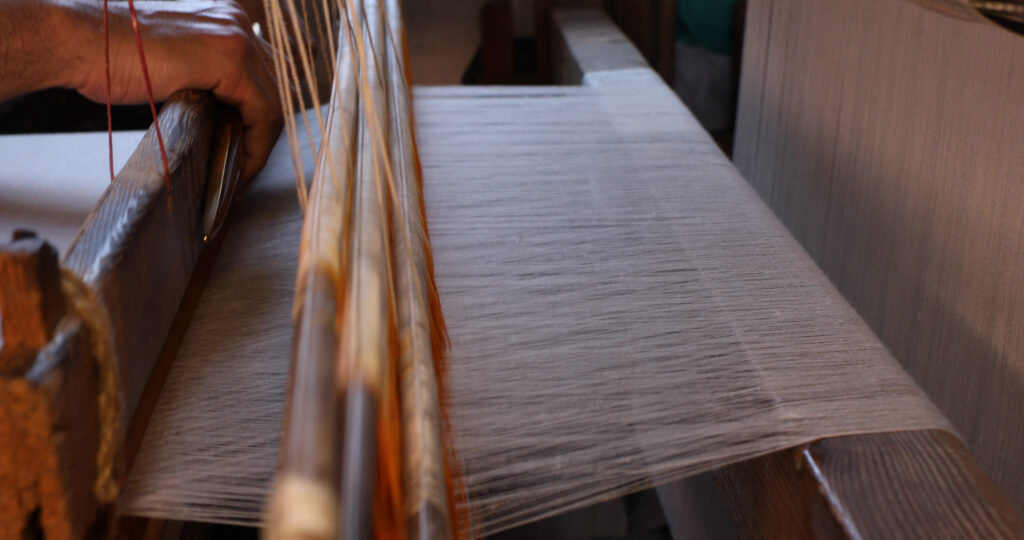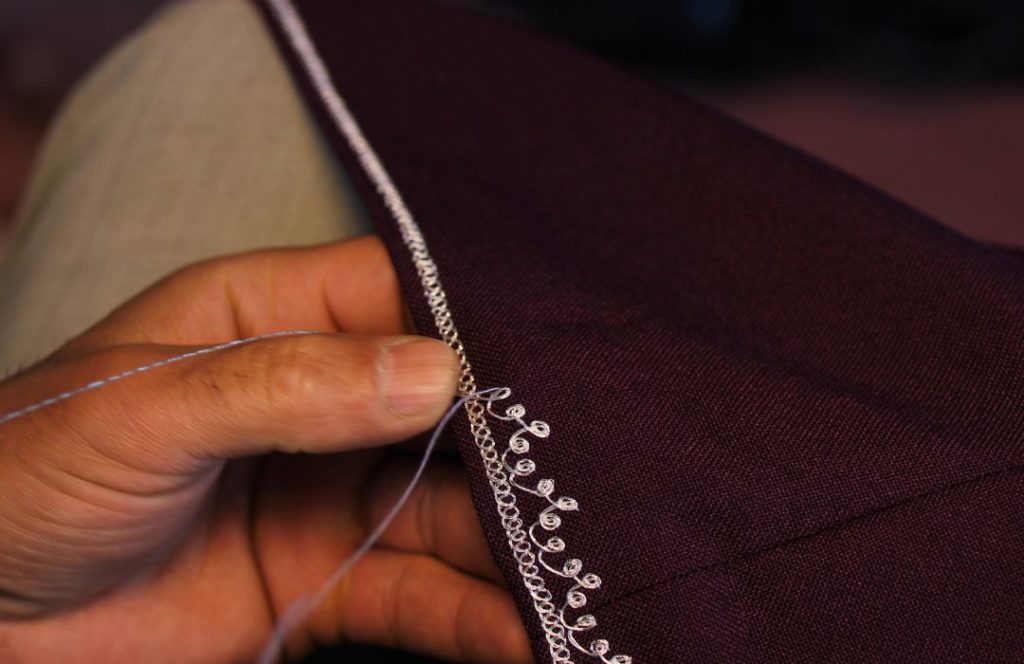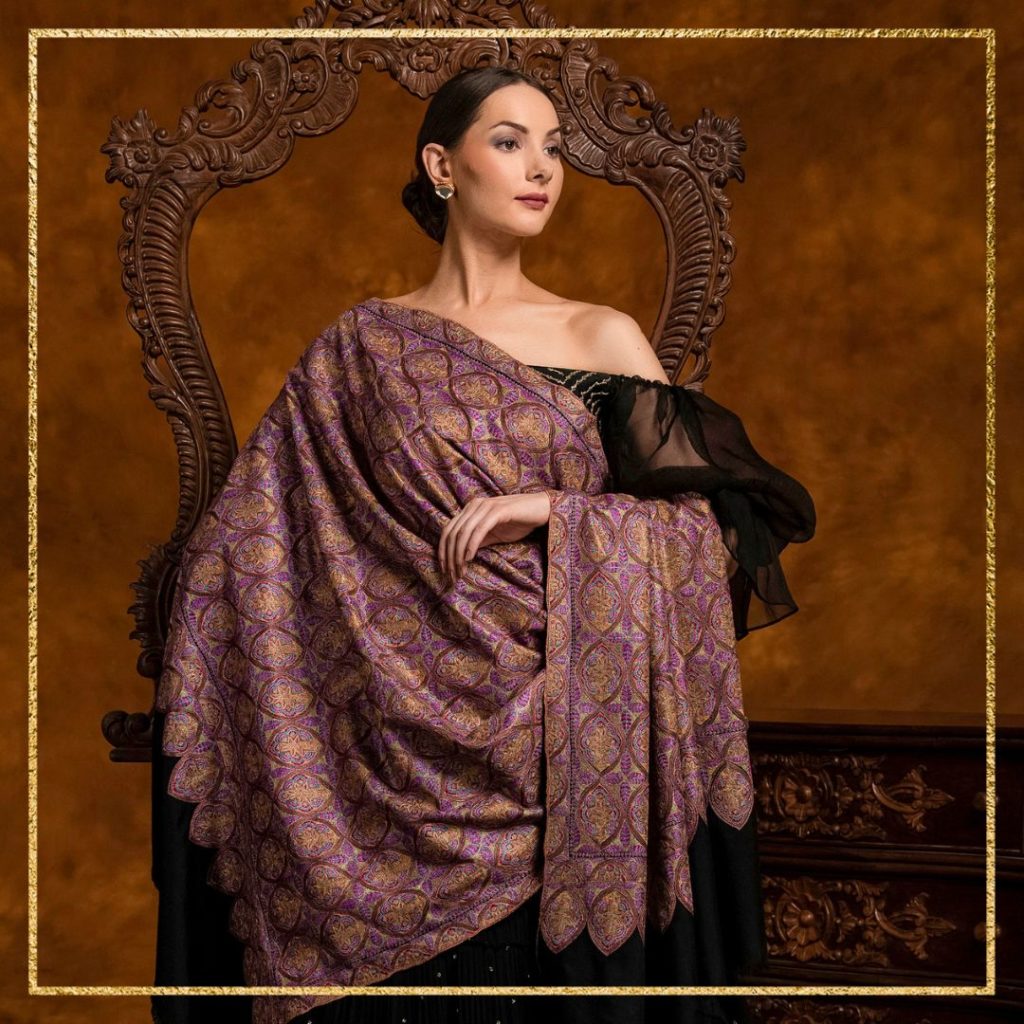Pashmina is the art of handcrafting luxury wraps and apparel from Cashmere wool which grows on the undercoat of a rare goat species in Ladakh. The luxury wraps and accessories produced from this fine and soft raw wool take from a few months to some years to complete, be it a Pashmina shawl, scarf, or fabric. Cashmere is acquired from Ladakh, but its entire processing takes place in Kashmir. From cleaning the raw wool to spinning and weaving, finishing and embroidery, all expertise is indigenous to Kashmir. It is the masterly skills of Kashmiri artisans that transform a lump of soft wool into world-famous wrap accessories.
Pashmina is made from Cashmere wool

Pashmina products are made of Cashmere. Raw wool or Cashmere is sourced from Ladakh. A region known as Changthang lies over 14000 feet above sea level. This area is home to the Changthangi goat which naturally grows fine Cashmere as an undercoat to survive in the harsh winters. The temperature in winter goes down to even -40 degrees. Therefore, it is this fine down coat of the goat that protects it. As summer arrives the coat makes the goat uneasy. So it rubs itself against rough surfaces and gets rid of some portion of the wool. Consequently, the rest of the wool is ethically combed off its body by professionals and herders and what we get is a lump of exceptionally soft wool. This soft blob is to be processed, which takes place in Kashmir.
Processing of the wool
The wool is sent to Kashmir, where womenfolk start with cleaning and sorting of the wool. Once it is clean, it is fixed onto a wooden spinning wheel called Yinder. Yinder helps spin the lump of wool into fine and delicate yarn, which has a diameter of 12-16 microns. This exceptionally fine yarn is later sent to weavers

Weavers mount the fine yarn onto the heddles of a handloom. The handloom is a classic wooden handloom, which has been used to weave Pashmina from centuries together. Accordingly, weavers spend 3 to 5 days to produce one shawl or scarf or any other fabric depending upon the size. This is the production process of a Pashmina shawl. The shawl acquired from this process is plain and needs some more detailing, finishing, or embroidery
Embroidering a Pashmina

Only hand embroidery is suitable for Pashmina. Since the base is extremely fine and delicate, machine embroidery can cause harm to it. Usually, Sozni embroidery, Tilla embroidery, and Papier Mache embroidery are done on Pashmina. It is, hence, again, only Kashmiri artisans who can embroider Pashmina shawls with utmost finesse and pattern and in the same traditional and classic fashion as royalty all over the world would cherish.
Pashmina Vs other wool types
Technically speaking, Cashmere, which is used to make Pashmina shawls, is not a wool type, but animal hair. As such, it is fine and smooth when compared to other types of warm fabrics. Pashmina is considered 8 times warmer than sheep wool, yet exceptionally light and fine. The owners of Pashmina shawls never need to wear thick sweaters and cardigans as Pashmina shawls are warm and comfortable enough for winter or fall seasons.
Why is Pashmina Special?

Pashmina is really special for the people of Kashmir. The reason for this is the olden times when the economy of Kashmir wasn't very favorable, and a few locals literally starved. At this time, a saint visited the valley from Persia, and along with him came some immensely talented craftsmen. These craftsmen had a huge know-how of a variety of crafts which was transferred to the locals. Hence the locals now became knowledgeable craftsmen and could work with their own hands.
As a result, locals could now make copper vessels, Papier Mache items, carpets, jewelry, and more by themselves and earn a decent living. But the most famous and more chosen art form was that of making Pashmina shawls. More and more people from the remotest corners of the valley were allured by the art of Pashmina. They, hence became spinners, weavers, or embroiderers of the same. As a result, Pashmina shawls from Kashmir reached their zenith. Now, patrons all around the world prefer Pashmina shawls from Kashmir to those produced in other regions of the world.
For this region, the people of Kashmir became more emotionally attached to this art, as it survived them during the hardest phases of their life. The same craftsmen who couldn't afford even the basic things could now travel from one country to another for training purposes. Pashmina is, undoubtedly, special for its finesse and warmth. But more, for the way it glorified the valley and made it visible to the outside world, which perhaps didn't even know where Kashmir was.
Also read: PASHMINA - THROUGH THE MEADOW OF KASHMIR
Concluding
Pashmina is made from the Cashmere wool of three Changthangi goats. One goat produces around 150 grams of Cashmere, and hence depending upon the size of the shawls, the wool is used. For one full Pashmina shawl of size 100*200 cm, wool from 3 - 4 goats is used. Pashmina is season-dependent. One has to wait for an entire year to get Cashmere from Ladakh.
Also read: KASHMIRI SHAWLS IN MID-VICTORIAN NOVELS